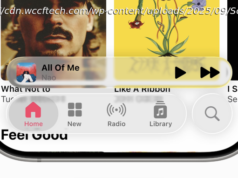Kids born after 1996 are part of what is commonly referred to as Generation Z, the group following the millennials. It’s the iMac, iPod, iPhone, iGeneration. (Photo: Jon Ragel/Getty Images) A parent opens a new app their kid is begging to download. It looks fun. It looks acceptable on the surface. It may even look […] Kids born after 1996 are part of what is commonly referred to as
A parent opens a new app their kid is begging to download.
It looks fun. It looks acceptable on the surface. It may even look adorable.
But looks can be deceiving. So, we’ve got to keep digging. Keep tapping everything that can be tapped in that app.
It seems like more and more apps geared toward kids have included not-so-obvious public chat functions. These features open the user up to contact from strangers or links to other social media or other apps that pose other potential dangers of interaction with creeps.
Countless of these apps exist, but we’ve rounded up a handful that are popular with our own kids, plus a few we’ve run across that are overtly dangerous.
In this popular lip-synching video app, users create videos lip-synching to music and follow or are followed on a platform that looks much like Instagram. (Musically was recently re-branded as Tik Tok.) Users can also chat with their friends. The question is, can complete strangers add your child as a friend?
The answer is yes. Thankfully, much like Instagram, an account can be made private so not everyone can view a profile. Other features can be customized so that only friends can send comments and messages, react to performances and even perform together.
Of course, it would be easy for a kid to flip the switch on all of these safety features, then toggle them back before a parent notices. But the comments under their posts as well as their inbox will tell a story.
More: Looking for a new iPhone? Here’s what you should – and shouldn’t – buy
Tik Tok also includes a feature called “Digital Wellbeing” located in the privacy and safety section of the app (accessed by tapping the ellipses in the upper right corner). Simply set a passcode and switch on screen time management and restricted mode, and the user is automatically restricted to two hours per day on the app (any more time requires the passcode). The restricted mode also limits the appearance of videos that may not be suitable for kids.
So what doesn’t work for us? We wish the privacy and safety features of a private account and unsearchable mode were included under this umbrella; unfortunately these toggles are completely accessed by any user, including kiddos.
Yet another danger: it seems that many of these apps act as wormholes into other apps. Tik Tok has the option of linking a Youtube channel in the profile, which isn’t too obvious at first glance. This blink-or-you-might-miss-it feature could be linking this app to an unmonitored Youtube channel.
More: Indiegogo is selling LEGOs for adults and they’re quite the catch
A friend recently told us that her 10-year-old daughter downloaded this app without her permission. A guy saw her child’s content doing handstands and asked her to put a skirt on, then do a handstand. Frightened, her daughter blocked him and went straight to her mother with the awful story. It’s not a shock that past investigations have revealed the use of this app by pedophiles to sexually exploit children.
It’s easy to see why this app appeals. The icon is just so inviting: a pretty purple background with a blue and pink star looks so playful and kid-friendly. Just opening this app, however, screams “not for kids.” There is a lot of adult content, including channels devoted to “girls” and “guys.” Explore a bit, and you’ll learn that those labels are just code for a lot of promiscuous photos. Games (called the “playground”) include chats with other users. There’s also an option to connect pretty much all social media to the account, plus Fortnite.
What’s worse, the app asks to access the user’s location. A pop up reads: “You can share your location information, and check nearby friends.” Clearly dangerous.
The only safety feature we found is the ability to block users.
In summary: not for kids. In fact, not really safe for adults, either.
More: Trunk or treat! Parents are dressing their cars in costumes for Halloween tailgating
This app is adorable. The user can play a number of games, complete quests to earn gems and visit friends’ virtual worlds, which include towns and homes. Players can perform tasks in these worlds to earn gems to purchase new outfits for their avatars.
But not so adorable is a chat and a friends list, which includes a function called Nearby. The consent form states that makers Line Corporation will acquire location information in order to enable users to send friend requests to other nearby users, and use and disclose this information to other users in the process. It will then suggest people to become friends with and disclose how many miles away they are from you.
Lounge enables chat with others who have joined the rooms, which are titled with topics such as HOT, Hangouts, Free Talk, Region, etc. The app states “Exchange of LINE IDs or other personal information is forbidden. Users who violate this rule will face punitive measures.” What measures exactly? It’s not clear. There is also “Free Talk” in the Lounge, which are chatrooms as well.
There is a privacy feature where the user can disable public viewing or searching of their profile, friend requests, allowing everyone to visit your world, and allowing nearby recommendations. The ability to search and visit others globally, display on global search, as well as allow random global visits can also be toggled off. These are all good features that ensure kids aren’t being accessed by strangers and that they’re only playing with their real-life friends. However, we couldn’t find any parental controls with passcodes that would keep kids from toggling everything on when they play.
More: ‘Red Dead Redemption 2’: First impressions from once upon a time in the West
Not much needs to be said about this one. It’s basically Tinder for teens. To sign up, users have to enter where they live and their gender. Users’ profiles are then available for swiping (yes, it really is pretty much Tinder). There is an age verification step that requires the user to take a selfie to verify the account to prove they are a teen. From the looks of it, someone in the Spotafriend staff determines if potential app users are teenagers or not based on that selfie. Not a reliable safety feature. Not even close.
In the ragingly popular and apparently addictive dystopian Fortnite game, players build forts, survive and battle to out-strategize each other.






